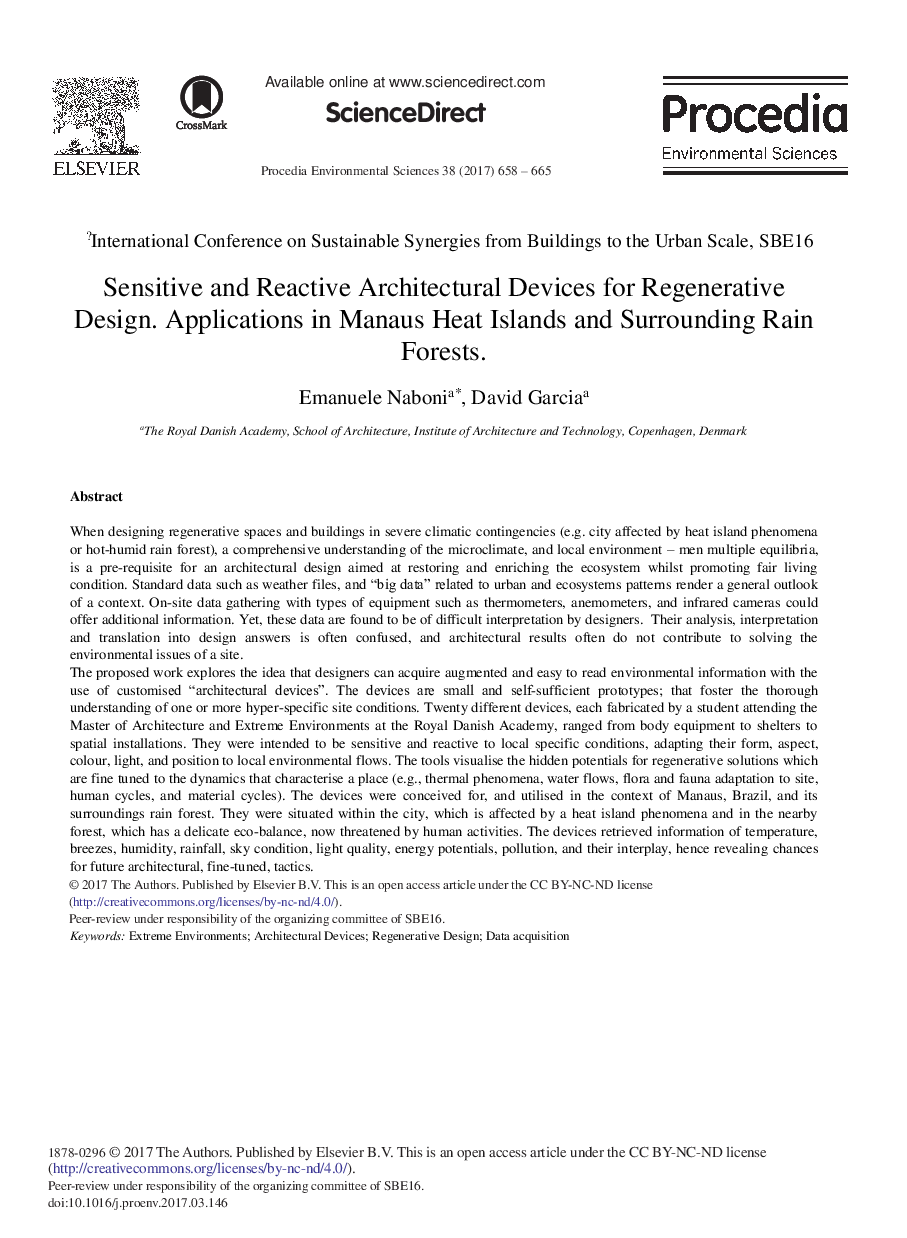| کد مقاله | کد نشریه | سال انتشار | مقاله انگلیسی | نسخه تمام متن |
|---|---|---|---|---|
| 5745089 | 1618606 | 2017 | 8 صفحه PDF | دانلود رایگان |

When designing regenerative spaces and buildings in severe climatic contingencies (e.g. city affected by heat island phenomena or hot-humid rain forest), a comprehensive understanding of the microclimate, and local environment - men multiple equilibria, is a pre-requisite for an architectural design aimed at restoring and enriching the ecosystem whilst promoting fair living condition. Standard data such as weather files, and “big data” related to urban and ecosystems patterns render a general outlook of a context. On-site data gathering with types of equipment such as thermometers, anemometers, and infrared cameras could offer additional information. Yet, these data are found to be of difficult interpretation by designers. Their analysis, interpretation and translation into design answers is often confused, and architectural results often do not contribute to solving the environmental issues of a site.The proposed work explores the idea that designers can acquire augmented and easy to read environmental information with the use of customised “architectural devices”. The devices are small and self-sufficient prototypes; that foster the thorough understanding of one or more hyper-specific site conditions. Twenty different devices, each fabricated by a student attending the Master of Architecture and Extreme Environments at the Royal Danish Academy, ranged from body equipment to shelters to spatial installations. They were intended to be sensitive and reactive to local specific conditions, adapting their form, aspect, colour, light, and position to local environmental flows. The tools visualise the hidden potentials for regenerative solutions which are fine tuned to the dynamics that characterise a place (e.g., thermal phenomena, water flows, flora and fauna adaptation to site, human cycles, and material cycles). The devices were conceived for, and utilised in the context of Manaus, Brazil, and its surroundings rain forest. They were situated within the city, which is affected by a heat island phenomena and in the nearby forest, which has a delicate eco-balance, now threatened by human activities. The devices retrieved information of temperature, breezes, humidity, rainfall, sky condition, light quality, energy potentials, pollution, and their interplay, hence revealing chances for future architectural, fine-tuned, tactics.
Journal: Procedia Environmental Sciences - Volume 38, 2017, Pages 658-665